How to Write Headlines People Can’t Help but Click [Formulas Inside]
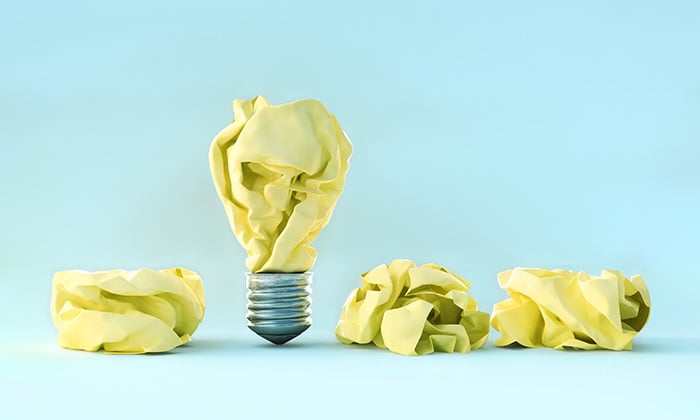
There’s more than one reason sites like BuzzFeed, Upworthy, or PopSugar get so many clicks, views, and site visitors.
The top reason, though, is that all of these sites use unique, powerful, and engaging headlines that make people want to click on their content and view the whole story.
There isn’t one right way to write a headline, but certain types have been more successful over the years. By following certain headline “formulas,” you’ll write headlines that will persuade people to click on your content.
Here’s how to write powerful headlines that people can’t help but click.
Why Headlines Matter
The headlines you write either grab the attention of your audience or bore them. You need to get them right because your prospective customers will make their first impressions about your brand from them.
Your headlines shouldn’t focus on selling to the reader since that can be a turnoff. Instead, they should entice users to click to your content.
You also need to ensure your headlines are an accurate representation of the contents of the page. Users will quickly bounce from your page if the content doesn’t match the headline.
Finally, your headlines should adhere to your company’s values. Most Americans believe the headlines that they see. Fake headlines or headlines that are too “click-baity” can lead to giving your brand a bad wrap and will make your business suffer in the long term.
The good news is that if you stick to the formulas in this article, you can avoid using misleading, false, or boring headlines that can hurt your business.
4U Formula Headlines
The first formula you need to know about is the 4U formula.
According to CopyBlogger, as many as 80% of people will read the average headline when they come across it, but only 20% will actually read the entire post.
If you want to boost the odds of people actually clicking on your headlines and reading an entire post, you have to make your headline as intriguing as possible.
Melanie Duncan’s 4U formula is perfect for compelling readers. The 4U formula instructs you to make your headline “useful, urgent, unique, and ultra-specific.”
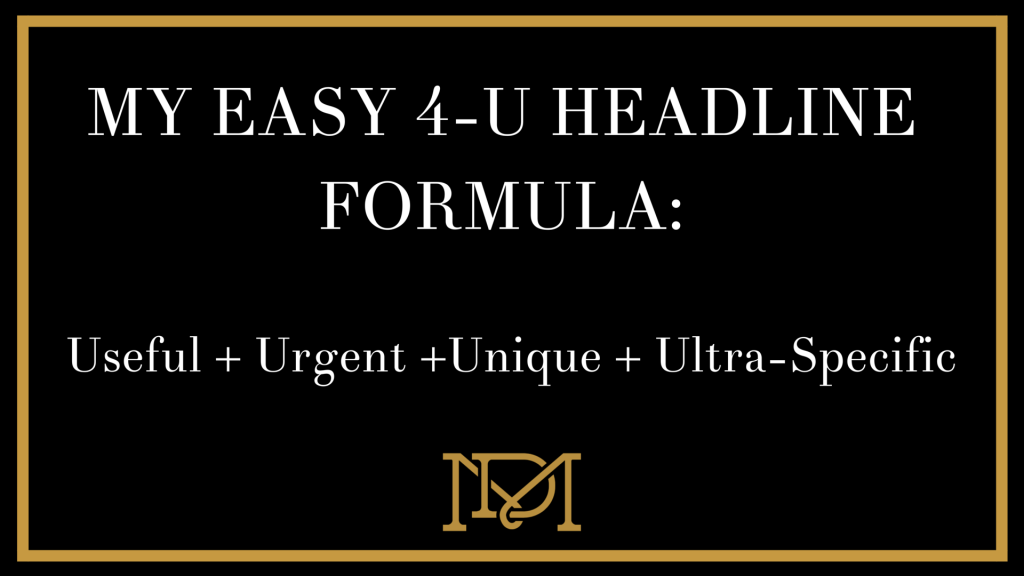
Useful Headlines
Think about the headlines that you actually click on when you’re scrolling through your news feed. Some are probably headlines that offer something that can help you.
You need to offer people the same useful value in your own headlines. Start out by understanding what will be useful to your audience, and then offer them what they need.
The headlines in this category should identify a problem and offer a solution, and so should the articles that go along with them. This works whether your company is service-based or product-based.
Examples of headlines that are useful include how-to articles and listicles like this one, from Wonder How To:

Other example “useful” headlines include:
- 10 Tricks for Getting Better Sleep
- How to Land Your Dream Job
- How-To Guide for Meditation Beginners
Urgent Headlines
Clever bloggers create a sense of urgency in their headlines to push people to click. Think FOMO here (for the uninitiated: Fear Of Missing Out).
There is so much online content trying to grab our attention. It’s easy to ignore headlines that don’t aren’t time-sensitive.
However, when something IS urgent, readers will often click on the headline to get the information right away. They don’t want to miss out on exciting, helpful, or informative content that they need right now.
Urgency is the hardest of the four U’s to capture, and it might not always apply to your article’s topic. If you’re going to skip over any of the 4 Us, this is the one to think about leaving out.
Examples of urgent headlines include titles like “Avoid THIS Mistake Before It’s Too Late” or “Do XYZ in Just 2 Weeks With This One Simple Trick.”
Traditional news outlets use urgency in their headlines all of the time. Just check out this one from Fox News:

Unique Headlines
People love rare and unusual phrases. They stick out like a sore thumb and pique people’s interest so that they just have to click.
Anything that you can do to make your headline stand out in an oversaturated online world will help.
Think about focusing on wordplay, puns, and interesting topics. Buzzfeed is notorious for this:
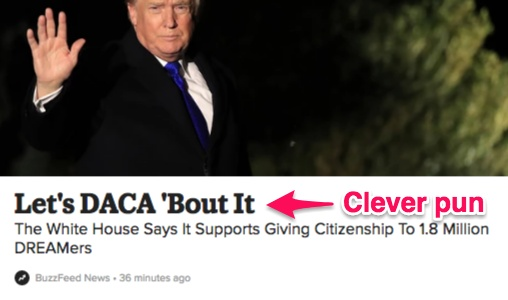
Ultra-Specific Headlines
Have you ever wondered why so many headlines these days have numbers in them? It’s because they are ultra-specific.
Readers like to know exactly what they can expect if they click on a headline. The best headlines take specific ideas and break them down one step further.
For example, don’t just write about foods that you should avoid. Talk about common foods to avoid. Don’t just mention home decor ideas, talk about do-it-yourself home decor ideas.
Again, this is all about understanding what will be useful to your audience. Here’s an example of an ultra-specific headline I used in the past:

When you make sure that all of your headlines are useful, urgent, unique, or ultra-specific (or a combination of methods!), you’ll come up with better headlines for every article that you write–headlines that push people to read because they offer an answer to problems they have.
Guide Headlines
The guide formula is a classic way to show people that your post can solve their problems.
It’s as easy as rephrasing your headline to read: “The (Adjective) Guide to (Ultra-Specific Topic).”
Be careful about how you phrase the contents of the blanks, though. Use unusual words where you can and try to avoid basic adjectives like “complete.” Try to spice it up a bit by changing your adjective to something like “compact” instead.
Here’s a great example from TheStranger.com:

Showcase the Benefit of Your Post in the Headline
Your headlines need to demonstrate exactly what’s in it for readers if they view your post. The headline needs to convince them that there’s a benefit to taking time out of their day to look at your content.
You need to really know your target audience to create a headline with this formula. You should know what search terms they are using to find your post and what information they hope to find in it.
This is as simple as writing a few headlines like “Make Your Own Email Template in Minutes” or “Fast and Easy Ways to Cook Bacon.”
Huffington Post gave away the big benefit of their post quite well in this headline:

You can also give away the benefits of your post within a headline if you want to offer readers something in exchange for their time, like “Get a FREE E-book at The End of This Blog Post.”
Create Headlines that Appeal to Your Readers’ “How-To” Instinct
Most people are interested in improving their quality of life in one way or another, whether it’s their personal or business life.
With “how-to” headlines, you can highlight people’s wants and needs and how to meet them.
Don’t include the process in the headline, though, since you don’t want to give away the big secret. That certainly won’t compel readers to stick around for your whole post. Instead, keep your focus on the end result and the real motivations that the reader has.
These can be articles like: “How to Start a Business From Home” or “How to Eat Healthier on A Budget.”
Here’s an example of one of my how-to headlines:

Like all other headline formulas, the how-to headline offers a solution to a specific problem. Another example:

You can apply this formula by first figuring out what problems your readers might be struggling with.
Next, find out how you can narrow this problem down to make it extra-specific. If you need help, reach out to your followers on social media and ask them what challenges they face. You can even run an online poll or send one out to your email subscribers.
Headlines Comparing Two Unexpected Things
When you compare two unexpected things, people will be curious to figure out how they relate.
For example, this headline is pretty hard to ignore:
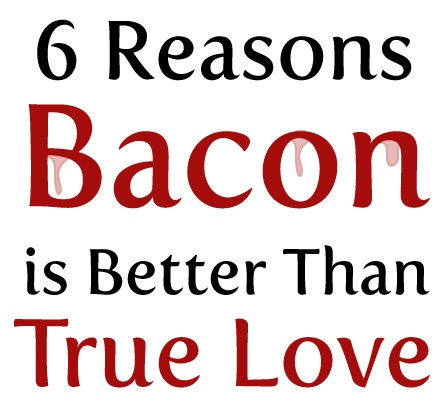
Claiming that bacon is better than true love is a pretty bold statement. I don’t know about you, but I’m pretty interested to know the author’s reasoning here.
The formula for this headline is as simple as something like “Why (one thing) trumps/is better than (the second thing).” Comparison headlines offer us an escape from having to weigh out difficult decisions.
These usually work best if you bust a myth, like suggesting people should eat chocolate instead of going to the gym.

People won’t expect that you’re choosing to recommend the unexpected choice, and they’ll want to know your reasoning.
To apply this formula, begin by thinking about which myth you can bust or decipher some of your readers’ hardest decisions. Then use the formula to give them an answer.
For example, Bitcoin is super popular right now. That makes this Forbes post claiming that gold is better than Bitcoin intriguing, to say the least.
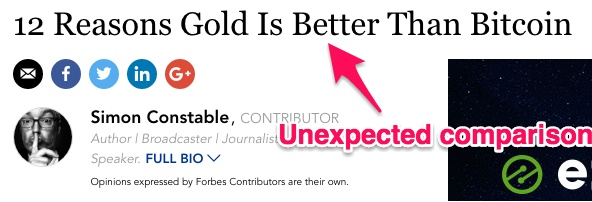
Classic, Numerical List Headlines
If you’re tired of seeing list posts all over the place, you might want to rethink your stance on them. People write them because they’re clickable and readable.
In fact, numerical headlines are the most preferred type of headline.
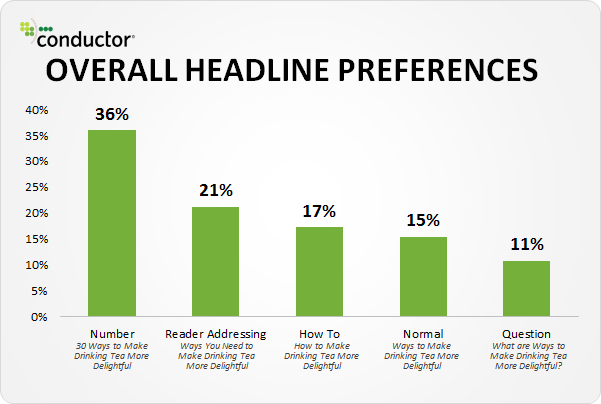
Buzzfeed’s homepage usually contains multiple listicle headlines:
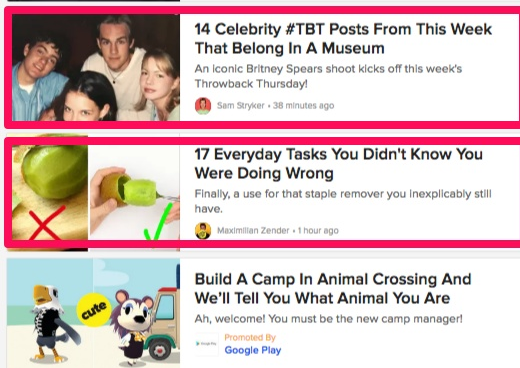
Some other examples include:
- 32 Legitimate Ways to Make Money at Home (The Penny Hoarder)
- 17 Ways Successful People Think Differently About Money (MindValley Blog)
- 9 Ways to Entertain Your Toddler Without Using a Smartphone (The Art of Manliness)
A list post headline is as simple as “XX (Adjective) Ways to (Do Blank).” Start by thinking about the tips that can help your readers. Include specific, actionable tips that they can apply to their lives right away.
Include emotional words in the blog title to make list posts even more effective, like “sneaky” or “legitimate.”
Headlines that Appeal to Readers’ Curiosity
If you offer up insider information, readers won’t be able to resist. Their curiosity will get the best of them, and they’ll have to read your post to find the answers.
The headline “XX Little-Known Methods to Do (Blank)” focuses on the idea that if the methods in your post are little-known, readers will have an advantage over people who don’t know about them yet.
You can also pique readers’ curiosity with a headline like “XX Secrets of (Blank).” Everyone will want to know the secret. Who doesn’t want insider information?
MoneyVersed combined these two methods with this headline:

“What Everyone Ought to Know About (Blank)” is also a great way to challenge readers to find out exactly what they’re missing out on.
When put to use, this headline should look something like this:

Use Keywords in Your Headlines
If you use keywords throughout an article (which you should!), you should also include them in the headline.
Not only do keywords matter when it comes to search engines, but they also matter for providing context. Readers can tell what your article is about and what they can expect from reading it.
You can do this easily with a headline like “What Makes (Keyword) So Important in (Keyword).”
You’ll attract more clicks and readers, get more tweets, rank higher in SERPs, and gain more traffic from headlines that incorporate your keywords.
Bizarre Headlines
When it comes to articles and blog posts, do as the pros do: always make sure your headlines are click-worthy.
If you have to write about something bizarre like HuffPost did in this headline to gain attention, do it.

The key to writing irresistible headlines is to avoid obvious clickbait but ensure that the article still plays on readers’ emotions.
You need to deliver on the promise from the headline within the body of your writing.
It also helps to test your headlines. For every article you publish, try to test at least five headline variants.
Headline Formulas for Your Articles, Blog Posts, and Social Media Posts
Think that only written blog posts or articles need well-crafted headlines?
Wrong. Every piece of content you create needs a compelling, strong, effective headline to attract more viewers. That goes for videos, podcasts, emails, tweets, and more.
Ideal Headline Length
No matter the formula or formulas you choose for your headlines, you need to keep an eye on the length. You want headlines to be long enough to cover all of the information, but short enough that they aren’t too lengthy.
According to CXL, The highest-converting headlines have between 16 and 18 words. Try to keep your headlines within this range for the best results.
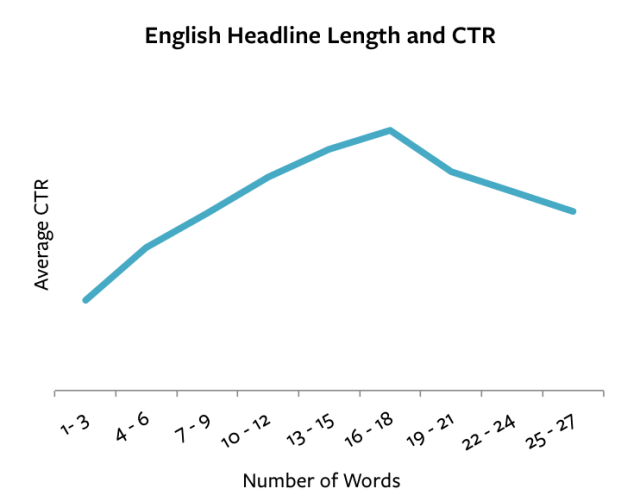
Headlines for Social Media
You can test your social media headlines for free with a tool like Buffer.
For every headline variant, you can see how many retweets, favorites, mentions, and clicks were earned. You can also see statistics on the potential for each headline.
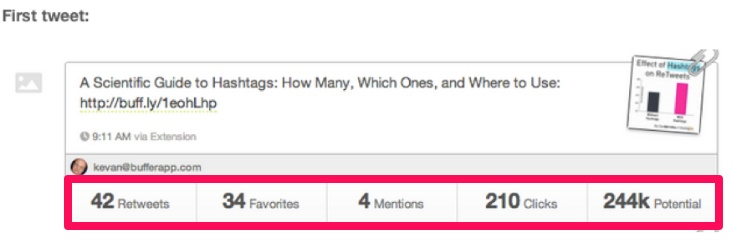
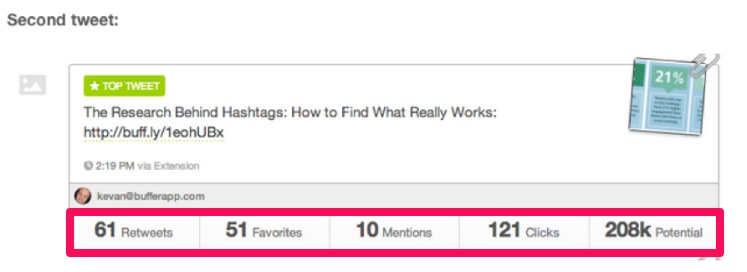
Then, head over to Buffer’s analytics tab to check out which of your headlines were clicked on the most by your followers.
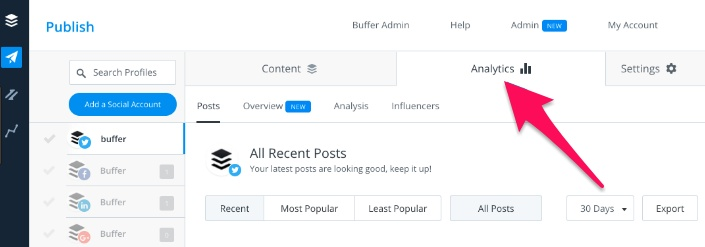
Headline Formulas for Email Subject Lines and Opt-In Pages
Email headlines are just as important as article headlines because you don’t want your emails to be sent to people’s’ trash folders to die.
If you don’t think your email subject lines through, you won’t see very good open rates. Your subject lines either compel people to click on your email and consume your content or ignore it.
Luckily, there are tools you can use to help you create compelling subject lines for your emails.
iSpionage is a tool you can use to create clickable, attention-grabbing headlines that are a step above the boring subject lines you’re probably used to seeing.

ContactMonkey is also great at crafting email subject lines that are interesting by using a play on words or including a pun. The brand also often includes emojis in their subject lines.

Email subject lines are important, but they can only go so far if you don’t have a robust list of subscribers. You can boost your opt-in pages to gain more subscribers with the same formulas you use to create your headlines.
People won’t be interested in subscribing to offers that fall flat. Aim for something like this eye-catching, opt-in worthy headline instead.
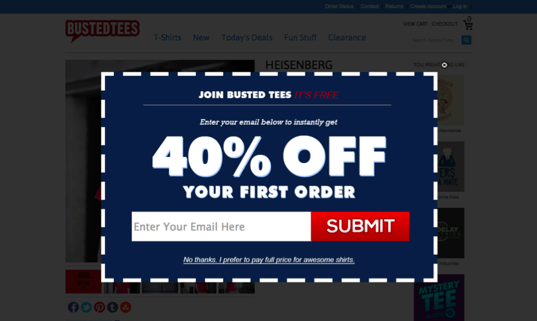
Not only are the visuals great, but the headline mentions free. As if that isn’t exciting enough, you’ll get 40% off of your first order if you sign up.
Shoot for the same kind of opt-in forms for more clicks and subscribers.
Conclusion
You might be wondering why so many sites are getting traffic to their content, but yours could be better. The answer may be in your headlines. These are the first thing that people see from your brand before deciding whether or not to click over to your copy.
While there’s no one-size-fits-all way to write a headline, there are some headline formulas that you can follow to create better-performing ones.
You should be able to find a formula that suits every piece of content you produce, across all of your channels.
Do you want help to create headlines that increase your clicks, volume, and ultimately revenue? Let’s connect.
What kinds of headlines have performed the best for you and your brand?
The post How to Write Headlines People Can’t Help but Click [Formulas Inside] appeared first on Neil Patel.
from Neil Patel https://ift.tt/2nYK1Fb
No comments